A uniform electric field is present in the positive x - direction. If the intensity of the field is then find the potential difference between two points A (0 m, 2 m) and B (5 m, 3 m).
To find the potential difference VB−VA between two points A and B in a uniform electric field, we can use the formula:
VB−VA=−→E⋅→AB
where →E is the electric field vector and →AB is the displacement vector from point A to point B.
Step 1: Identify the Electric Field
The electric field is given as →E=5N/C in the positive x-direction. Therefore, we can express this as:
→E=5^iN/C
Step 2: Determine the Coordinates of Points A and B
The coordinates of point A are (0m,2m) and the coordinates of point B are (5m,3m).
Step 3: Calculate the Displacement Vector →AB
The displacement vector →AB is calculated as:
→AB=→B−→A=(5−0)^i+(3−2)^j=5^i+1^jm
Step 4: Calculate the Dot Product →E⋅→AB
Now we compute the dot product:
→E⋅→AB=(5^i)⋅(5^i+1^j)=5⋅5+0=25V
Step 5: Calculate the Potential Difference
Now, we can find the potential difference:
VB−VA=−→E⋅→AB=−25V
Final Answer
Thus, the potential difference VB−VA is:
VB−VA=−25V
---
The electric field is given as →E=5N/C in the positive x-direction. Therefore, we can express this as:
→E=5^iN/C
The coordinates of point A are (0m,2m) and the coordinates of point B are (5m,3m).
The displacement vector →AB is calculated as:
→AB=→B−→A=(5−0)^i+(3−2)^j=5^i+1^jm
Now we compute the dot product:
→E⋅→AB=(5^i)⋅(5^i+1^j)=5⋅5+0=25V
Now, we can find the potential difference:
VB−VA=−→E⋅→AB=−25V
Thus, the potential difference VB−VA is:
VB−VA=−25V
Topper's Solved these Questions
- ELECTRIC POTENTIALBOOK - CENGAGE PHYSICS ENGLISHCHAPTER - ELECTRIC POTENTIALEXERCISE - Examples
9 Videos
- ELECTRIC POTENTIALBOOK - CENGAGE PHYSICS ENGLISHCHAPTER - ELECTRIC POTENTIALEXERCISE - Exercise 3.1
23 Videos
- ELECTRIC FLUX AND GAUSS LAWBOOK - CENGAGE PHYSICS ENGLISHCHAPTER - ELECTRIC FLUX AND GAUSS LAWEXERCISE - MCQ s
38 Videos
- ELECTRICAL MEASURING INSTRUMENTSBOOK - CENGAGE PHYSICS ENGLISHCHAPTER - ELECTRICAL MEASURING INSTRUMENTSEXERCISE - M.C.Q
2 Videos
Similar Questions
A uniform electric field to 100 Vm−1 is directed at 60∘ with the positive x-axis as shown in figure. If OA= 2 m, the potential difference VO−VA is
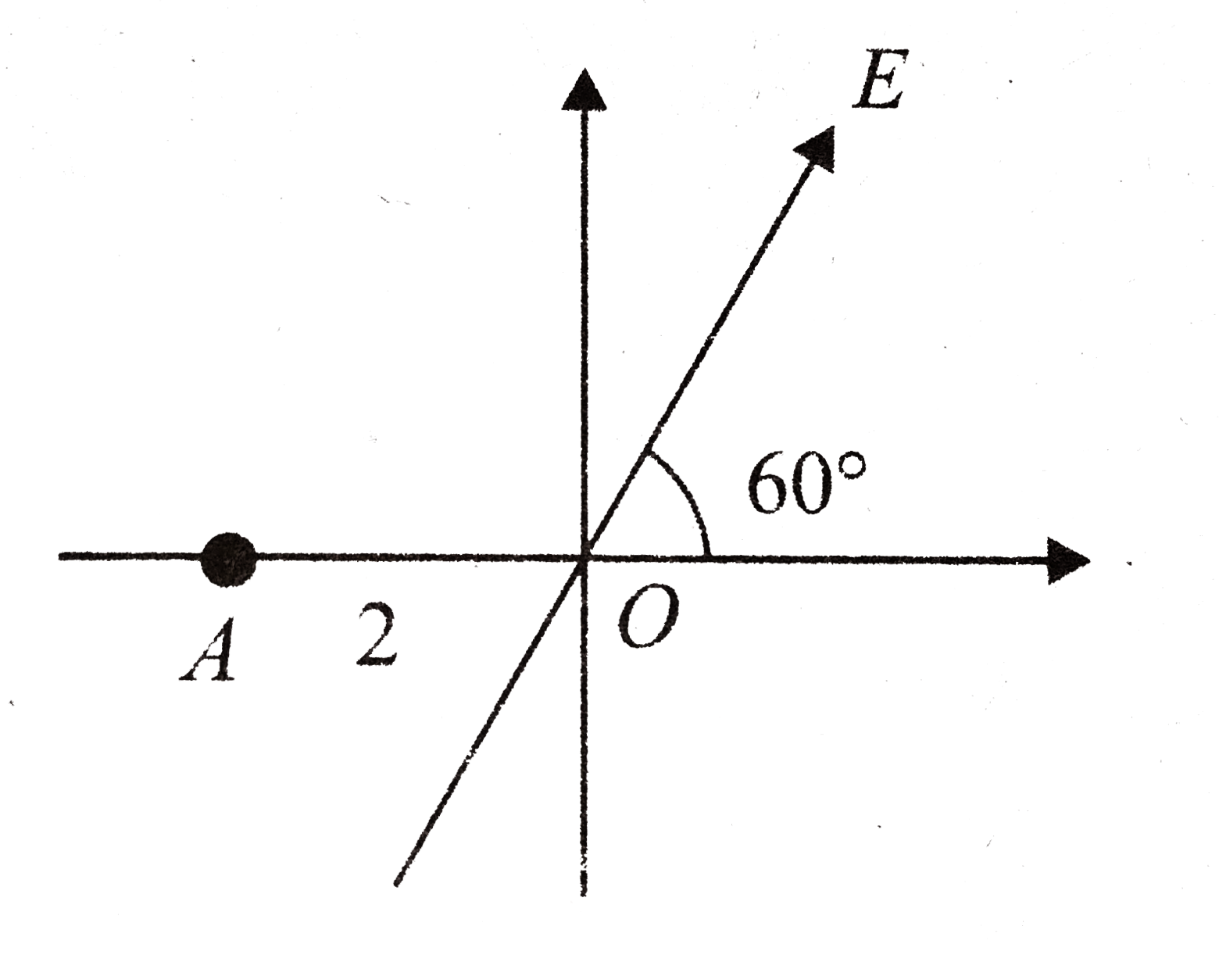
View SolutionA uniform electric field of 100V/m is directed at 3∘ with the positive x-axis as shown in figure. Find the potential difference VBA if OA=2m and OB=4m.
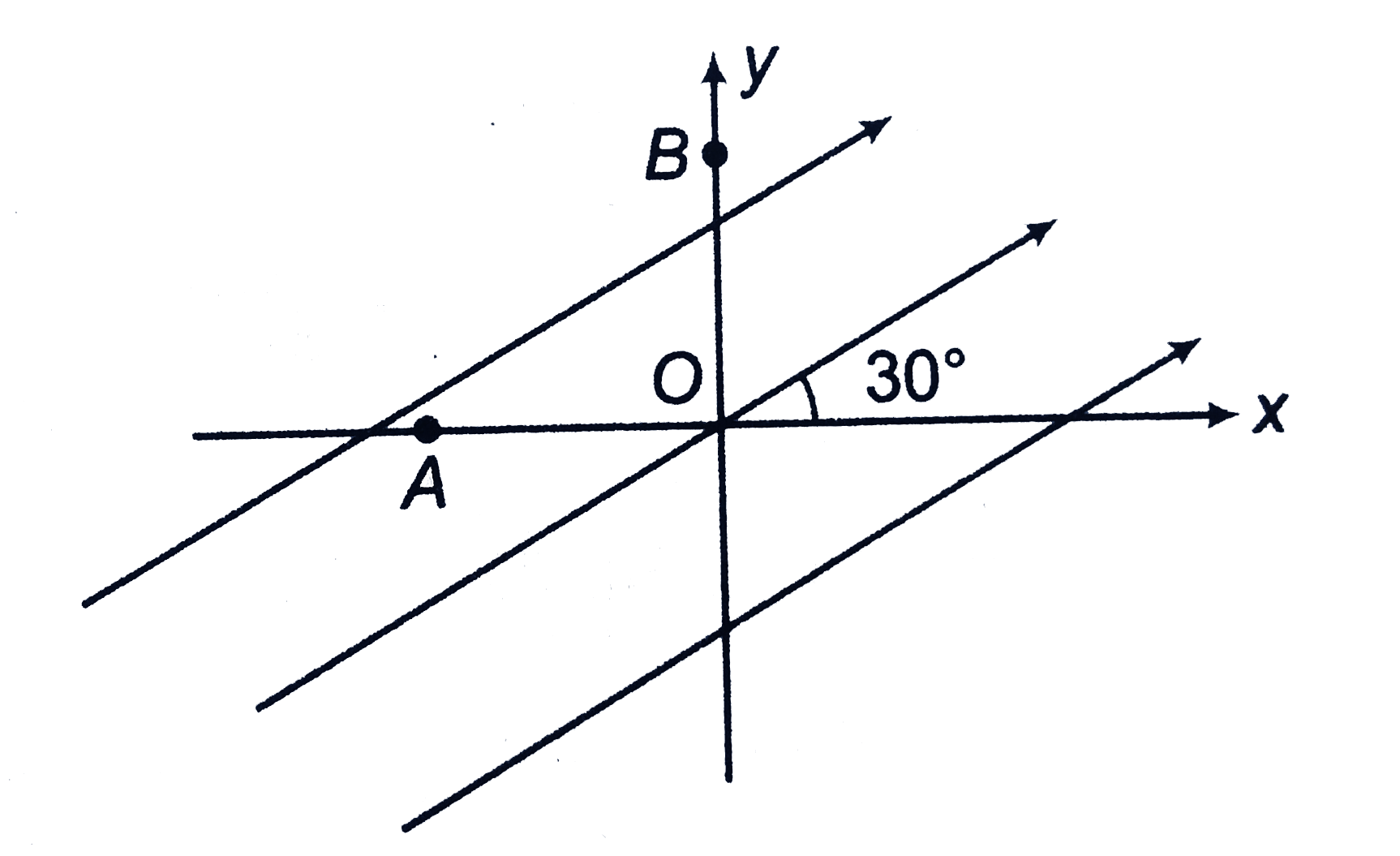
View SolutionA uniform electric field of 100 V/m is directed at 30∘ with the positive x-axis as shown in figure Find the potential difference Va−VA if OA = 2 m and OB = 4m.

View SolutionA uniform electric field of 100V/m is directed at 30∘ with the positive x-axis as shown in figure. Find the potential difference VBA if OA=2m and OB=4m.

View SolutionA battery of e.m.f. 10V is connected to resistance as shown in figure. The potential difference VA−VB between the point A and B is
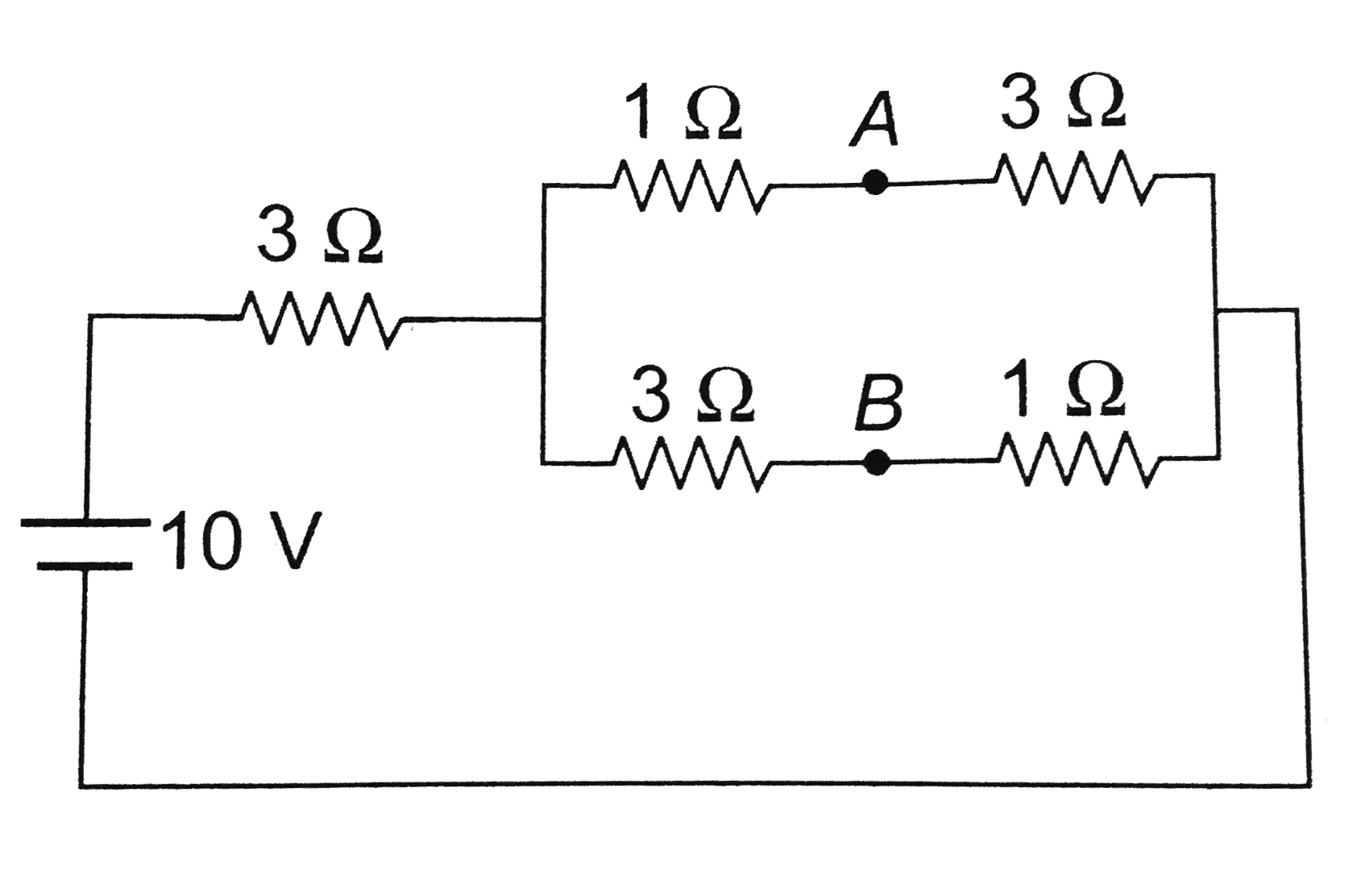
View SolutionIn a certain region, electric field E exists along the x - axis which is uniform. Given B=2√3m and BC=4m. Points A, B, and C are in xy plane.
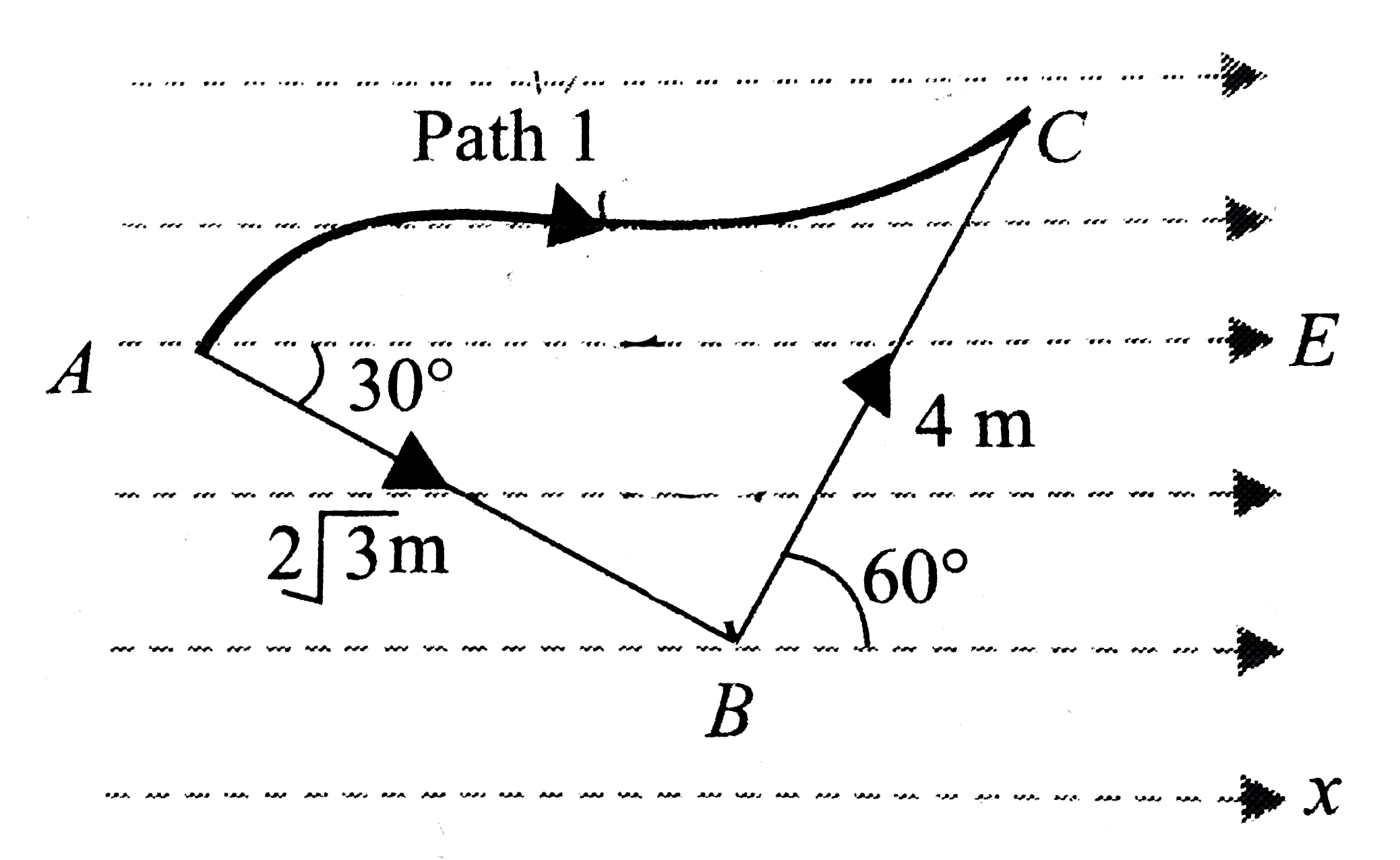 .
.
Find the potential difference VA−VB between the points AandB.
View SolutionThe uniform electric field is along positive y-axis positive x axis as shown in figure. The signs of potential differences VP−VQ and VB−VA respectively are

View SolutionUniform electric field of magnitude 100Vm−1 in space is directed along the line y=3+x. Find the potential difference between points A(3,1)andB(1,3).
View SolutionIn a certain region, electric field E exists along the x - axis which is uniform. Given AB=2√3m and BC=4m. Points A, B, and C are in xy plane.
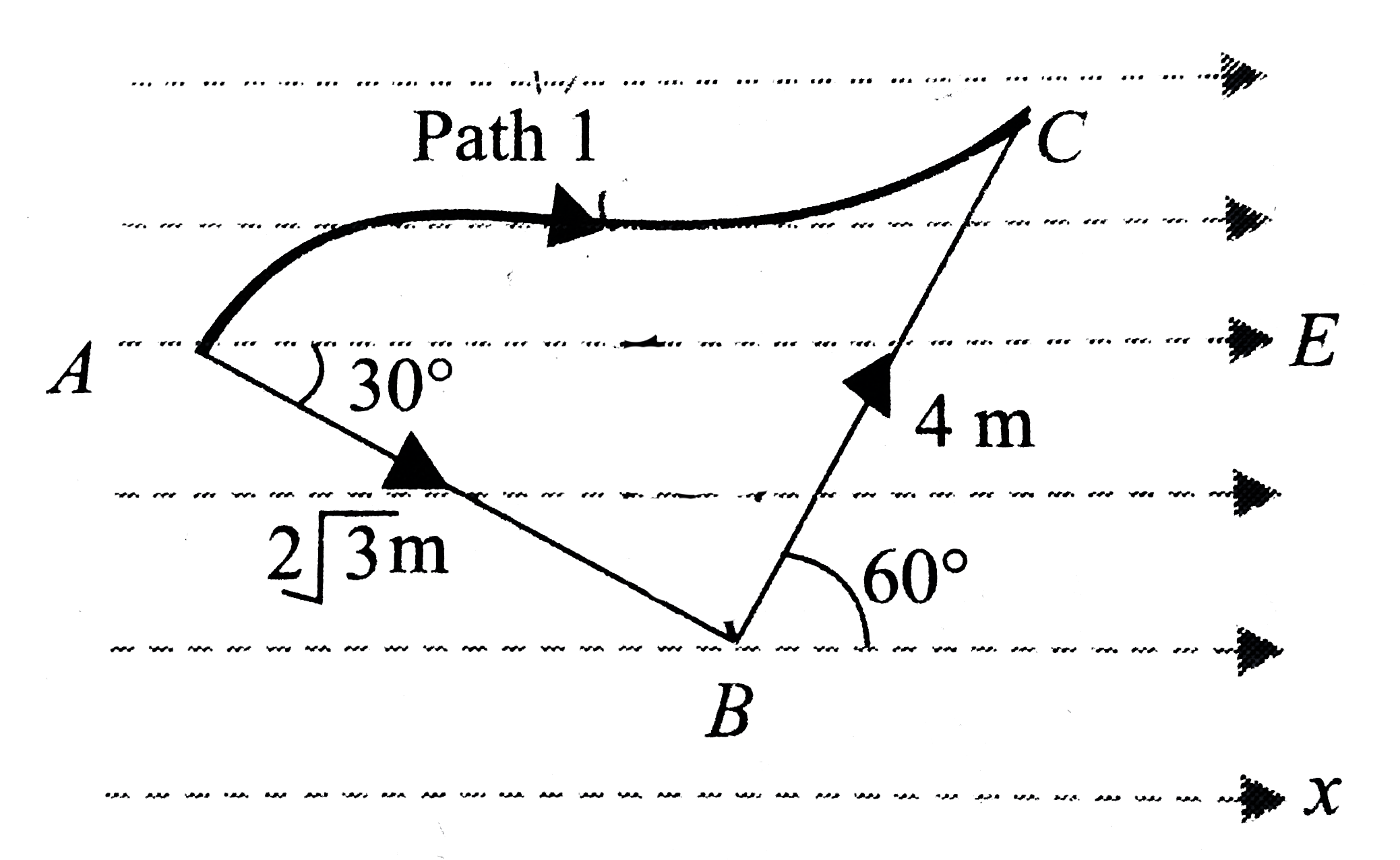 .
.
find the potential difference VC−VB between the points CandB.
View SolutionA uniform electric field of 400V/m is directed at 45∘ to the positive X-axis, in the X−Y plane as shown in figure

View Solution
